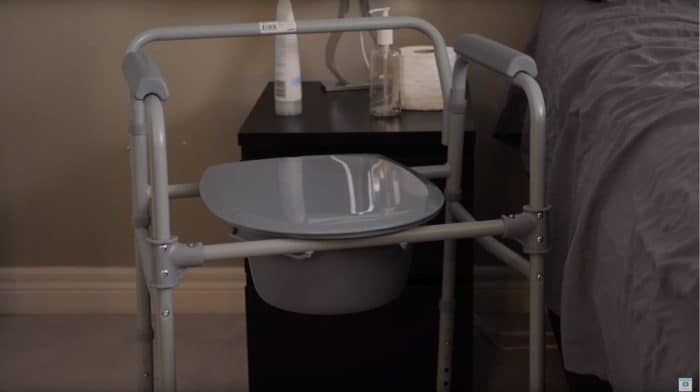How To Help With Compression Stockings
Sometimes a doctor will order compression stockings to help someone with swollen legs and feet. Compression stocking can be tight to put on and can cause circulation problems if put on incorrectly. In this video, we’ll show you what they are, why we use them and we’ll give you some tips on how to put these stockings on.
Sometimes a doctor will order compression stockings to help someone with swollen legs and feet.
In this short video, we’ll show you what they are, why we use them and we’ll give you some tips on how to put these stockings on
Let’s try it!
Compression stockings are tightly fitted elastic socks that are usually knee-high or thigh-high in length. You may have also heard them being called TED Stockings.
To help the person you’re caring for, we’ll need to start with a clean pair of stockings.
There are so many types to choose from, they also come in all sorts of lengths, sizes, and strengths. Some have closed toes and others have open toes, but their doctor and the technicians at your local home health pharmacy will help you figure out the best style for them.
If the kind you’re working with has open toes, a nylon foot slip is really helpful. Rubber dishwashing gloves also work well to help grip the stockings.
Having a footstool can help you put the socks on as well if the person isn’t lying in bed when you’re helping them.
Compression stockings are worn to help prevent fluid buildup in the legs (edema), inflammation of a vein (phlebitis) or a blood clot (deep vein thrombosis or DVT)
Usually, you put them on in the morning and take them off at bedtime.
The doctor will decide what type is best and how long they have to wear them, then a technician at the home health store will measure their legs to decide the best size to buy when you bring them the prescription.
Putting on these stockings can be tricky and you may be afraid of hurting the person you’re caring for, so let’s review some tricks to make it easier for you and less painful for them.
It’s easier to put on these stockings if the person you’re caring for is lying down. If that isn’t comfortable, try having them sit and put their foot on a footstool
If they’re open toe stockings, you can put the toe slip over their foot now. Toe slips are usually made of nylon and they really help the stocking slide over their foot a lot easier
The first thing to do is turn the stockings inside out until you get to the heel, like this
Start by putting the stocking onto their foot and over their heel
Once the heel is in place, grab the top band of the stocking and pull it up to their leg. If you feel like it’s really hard to pull up, you can use the rubber dishwashing gloves to help slide the stockings up.
If you have long or sharp nails, be careful not to scratch them or rip the stocking. The rubber gloves will also help prevent that.
If you’ve used a foot slip, you can remove it now.
If the stocking is the knee-high length, make sure that you leave two finger widths below the knee so that it doesn’t cut off blood flow and increase swelling
Finish up by smoothing out any wrinkles or creases. Wrinkles in the stocking can cause pain or skin injury. Not to worry, the rubber gloves also help with this!
Now let’s work on taking those stockings off.
The rubber gloves can help you slide the stockings down. As you slide them off, turn them inside out as you go.
Once the stockings are off, help the person you’re caring for wash or wipe down their legs. If needed use some soap and water. Now would be a good time for a shower or a bed bath. If you’d like some more information about those topics, click here
If the person you’re caring for likes to have cream or lotion on their legs, only apply it after taking the stockings off.
Moisture from lotion can cause skin rashes, sores or damage the stockings if you put it on right before putting the stockings on in the morning.
Stockings should be washed every couple of days or if they get dirty. Follow the care instructions that they came with, but for most, you can hand wash them in soap and water and squeeze out any excess water. It is best not to twist to wring out the stockings as it can reduce the elasticity.
You can hang the stockings to dry over a clothing rack or shower rail. Using a dryer can ruin the elastic in the stocking, so it’s best to avoid that. When using compression stockings, always check their legs for any excess swelling, fluid draining out of their skin, pain, redness, or open areas.
If you notice any of these, don’t put their stockings on and notify their health care provider for follow up. Putting on compression stockings is not an easy task! We hope that following these simple steps you’ll feel more comfortable and skilled!
For more helpful information for caregivers like this, check out our Caregiver Essentials video series






